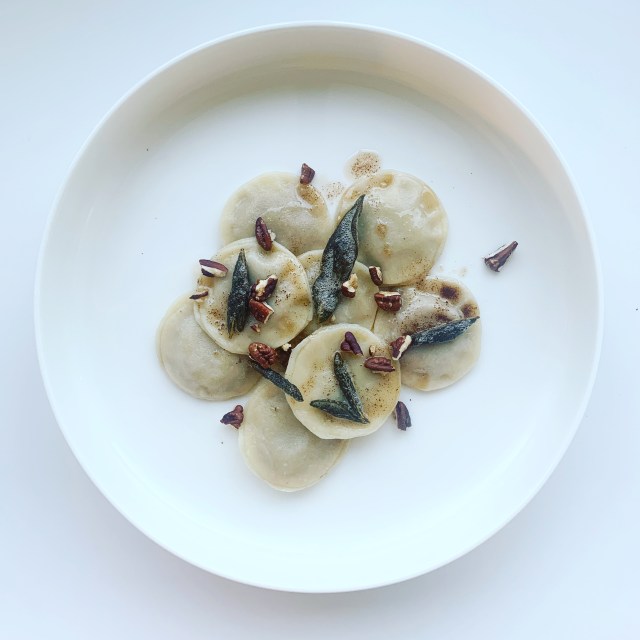
When you want a 15-minute meal, try this Creamy Sun-Dried Tomato Pasta. Using very few ingredients put together at record speed, this recipe will truly get you to pasta heaven. This has become a staple in our home, the kids love it, and the use of coconut milk makes it healthy and luscious.
Have you ever wondered about sun-dried tomatoes? Are they really dried in the sun? Well, I wanted to know as well and here’s what I found out. It seems unclear where sun-dried tomatoes originated, however, it is a fact that Italians dried their tomatoes on their rooftops during the summer. That allowed them to enjoy the valuable nutrition of tomatoes in the winter, when tomatoes were nearly impossible to cultivate. It typically takes 4 to 10 days in the sun for tomatoes to complete the sun-drying process. The tomatoes are usually salted before being placed in the sun to improve the color. The great thing with sun-dried tomatoes is that they keep most of their nutrients, even after they have been dried. They are high in lycopene, antioxidants and vitamin C. Interestingly, according to the USDA, few store-bought sun-dried tomatoes today are actually sun-dried. Manufacturers now favor the use of dehydrators and ovens. The laws and regulations, however, are written in a way that allows manufacturers to still use the term “sun-dried”.
Sun-dried tomatoes became all the rage in North America in the 80s and 90s, where they would be used in recipes, on antipasti platters, as a topping on salads. So much that it became, well, too much. They then lost popularity by the end of the 90s from overuse. In this recipe, I go against all odds and use a whole jar of them. I personally prefer sun-dried tomatoes packed in oil and spices, rather than the very dried ones in a plastic bag. Simply make sure to blot the tomatoes with paper towels to remove excess oil before chopping.
For other quick pasta recipes, check out this Rainbow Pasta and this Pasta with Greens in Creamy Wine Sauce.
PrintCreamy Sun-Dried Tomato Pasta
- Prep Time: 5 minutes
- Cook Time: 10 minutes
- Total Time: 15 minutes
- Yield: 4 servings 1x
Ingredients
- 1 lb pasta of choice
- 2 tablespoons olive oil
- 1 cup sun-dried tomatoes, finely chopped
- 7 cloves garlic, minced
- 1 onion, finely chopped
- 5 tablespoons flour
- 3 cups plant milk of choice
- Sea salt and pepper, to taste
- Fresh basil, to serve
Instructions
Cook the pasta according to package directions. Drain, reserving about 1/2 cup cooking liquid, if desired, and set aside.
In a large skillet, heat the olive oil over medium heat. Add the sun-dried tomatoes, garlic and onion and sauté, stirring often, until the onion is translucent, about 5 minutes. Slowly add the flour, while stirring. Let cook for 1 minute. Slowly whisk in the milk, ensuring there are no clumps. Add the milk, while whisking, and let simmer for 5 minutes, until thick and creamy. At this point, you may want to add more milk or the pasta cooking liquid, to achieve the desired consistency. Add sea salt and pepper, to taste. Combine the pasta with the sauce and serve, garnished with fresh basil. Bon appétit!
Keywords: pasta, sun-dried tomatoes, creamy
Pâtes crémeuses aux tomates séchées
- Prep Time: 5 minutes
- Cook Time: 10 minutes
- Total Time: 15 minutes
- Yield: 4 portions 1x
Ingredients
- 1 livre de pâtes, au choix
- 2 c. à soupe d’huile d’olive
- 1 tasse de tomates séchées, hachées finement
- 7 gousses d’ail, émincées
- 1 oignon, haché finement
- 5 c. à soupe de farine
- 3 tasses de lait de coco (ou d’amande ou d’avoine)
- Sel de mer et poivre, au goût
- Basilic frais, haché, pour servir
Instructions
Cook the pasta according to package directions. Drain, reserving about 1/2 cup cooking liquid, if desired, and set aside.
In a large skillet, heat the olive oil over medium heat. Add the sun-dried tomatoes, garlic and onion and sauté, stirring often, until the onion is translucent, about 5 minutes. Slowly add the flour, while stirring. Let cook for 1 minute. Slowly whisk in the milk, ensuring there are no clumps. Add the milk, while whisking, and let simmer for 5 minutes, until thick and creamy. At this point, you may want to add more milk or the pasta cooking liquid, to achieve the desired consistency. Add sea salt and pepper, to taste. Combine the pasta with the sauce and serve, garnished with fresh basil. Bon appétit!
Keywords: pâtes, tomates séchées, sauce

















